Gender and Inclusion
Gender, age, abilities and other individual or context-specific characteristics present different opportunities and challenges to provide CVA to people in crisis in a dignified manner.
Among humanitarian actors, there is an increasing acknowledgement of the specific needs and constraints of people of differing abilities, older people, people of different genders, particularly women, and people on the move. Alongside this is a growing appreciation of the need for tailored and sensitive measures that ensure their effective inclusion.
Supporting the needs of diverse people with CVA goes beyond making them a target group; it is about meaningful engagement, purposive design and implementation, and programme adjustment to meet different groups’ needs with dignity. Inclusive approaches go hand in hand with people-centred aid.
Current priorities
The CALP Network will continue to encourage cash actors to widen their focus to be more inclusive and champion a fuller understanding of how CVA can go beyond the notion of ‘do no harm’ towards appropriately addressing the needs of diverse people in safe and dignified manners.
We will work to elevate the experiences and initiatives on CVA and gender, disability inclusive CVA, working with different ethnicities and cultural identities, minority groups, people with diverse sexual identities, and age groups.
CALP will also strive to make its work as accessible as possible.
Featured content

Collected Papers on Gender and Cash Transfer Programmes in Humanitarian Contexts
Report
Existing gender inequalities mean that disasters and conflicts impact women, men, girls and boys differently. Cash based assistance is one of the most significant developments in humanitarian assistance in recent years. But the relationship between gender and cash based assistance in humanitarian contexts is poorly understood. All too often, interventions are designed based on assumptions...

Microlearning video: CVA and Gender
Blog Post
This video provides an overview of the relationship between gender and cash and voucher assistance (CVA) structured around the humanitarian project cycle, which include: Assessment and response analysis: How to adjust the assessment processes to achieve a more accurate reflection of gender and markets. Design and implementation: How to use methods and protocols to reduce the potential...
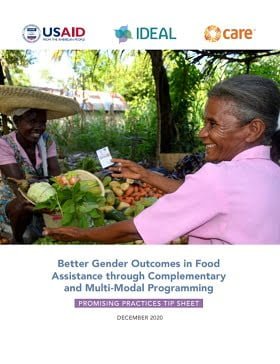
Better Gender Outcomes in Food Assistance through Complementary and Multi-Modal Programing: Promising Practices Tip Sheet
Guidelines and Tools
This Tip Sheet is excerpted from the research report, “Better Gender Outcomes in Food Assistance through Complementary and Multi-Modal programming,” and gives promising practices by the cycles of project cycle management, as well as at the response level. Additionally, there are expert tips and wisdom practices that support the use of a gendered approach in development or humanitarian...

Cash & Voucher Assistance and Gender-Based Violence Compendium
Guidelines and Tools
The Compendium is intended as a companion to the 2015 Inter-Agency Standing Committee (IASC) Guidelines for Integrating Gender-Based Violence Interventions in Humanitarian Action and its companion resource, the GBV Pocket Guide. The guidance was developed through the efforts of 15 organizations who contributed expertise in the inception, design and review of the document. The process was led...
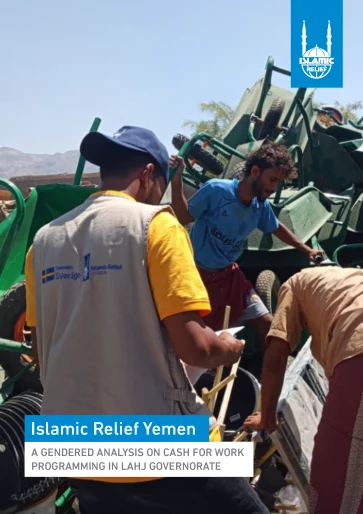
A Gendered Analysis on Cash for Work Programming in Lahj Governorate
Case Study
Cash for Work (CFW) programmes are designed to help the most vulnerable people meet their essential and basic needs. In Yemen, CFW interventions are responding to an ever-growing proportion of the Yemeni population that are in need of humanitarian assistance. Working with communities in the targeted areas of Hudayda and Lahj, the Swedish International Development Cooperation Agency SIDA-funded...
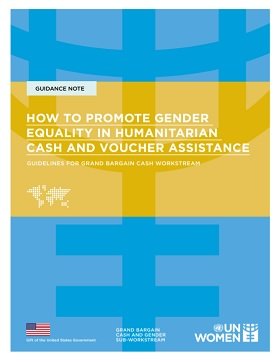
How to Promote Gender Equality in Humanitarian Cash and Voucher Assistance
Guidelines and Tools
The use of cash and voucher assistance (CVA) in humanitarian action is increasing rapidly.
With this rise, there is also growing demand by stakeholders to ensure CVA is more gender-responsive, addressing gender gaps and moving towards greater gender equality.
Gender-responsive CVA, which recognizes existing disparities and addresses the needs of all crisis-affected people equally, has the...
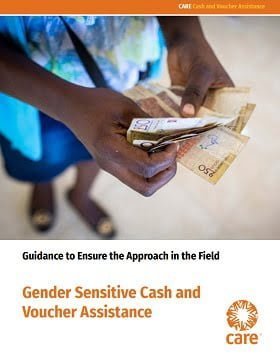
Gender-Sensitive Cash and Voucher Assistance: Guidance to ensure the approach in the field
Guidelines and Tools
This guidance builds on CARE’s ambition-via practice, research, evidence on CVA–and aims to support the application of gender sensitive CVA throughout the project cycle and at the response level. It is divided into two sections: – Part A: ‘What has been learned about gender sensitive CVA?,’ briefly explains the recommendations that came from the research. – Part B: ‘How do we...

Enablers and Gaps: Gender Equality, Gender-Based Violence Response and Mitigation in Cash and Voucher Assistance at Response levels: analysis on three case studies
Report
The Gender and Cash Sub-Workstream identified three case studies that illustrate how Cash Working Groups, GBV Sub-Clusters, gender focal points (e.g. Gender in Humanitarian Action Working groups at country and regional level) and humanitarian partnerships can enable meaningful and wider engagement on gender equity and GBV response in CVA. The case studies all show different aspects of linking...

How to mitigate gender-based violence (GBV) risks in cash and voucher assistance (CVA)
Video
Cash and voucher assistance (CVA) is an important tool to help individuals affected by crises get back on their feet. But just like any other form of assistance, it is vital to ensure that it does not fuel tensions in the household or in the community and that it does not create new risks for women and girls. Fortunately, there are a variety of ways that cash actors can work to mitigate risks...

Inclusive Information Systems for Social Protection: Intentionally Integrating Gender and Disability
Policy paper
Digital information systems serving the social protection sector, and especially social assistance, are increasingly prominent and will continue to be, as is the case within all other sectors. “Why? Because the ability of a country to care for its people and respond to their lifecycle needs depends on its ability to identify those who are in need, enroll them, provide tailored benefits and...
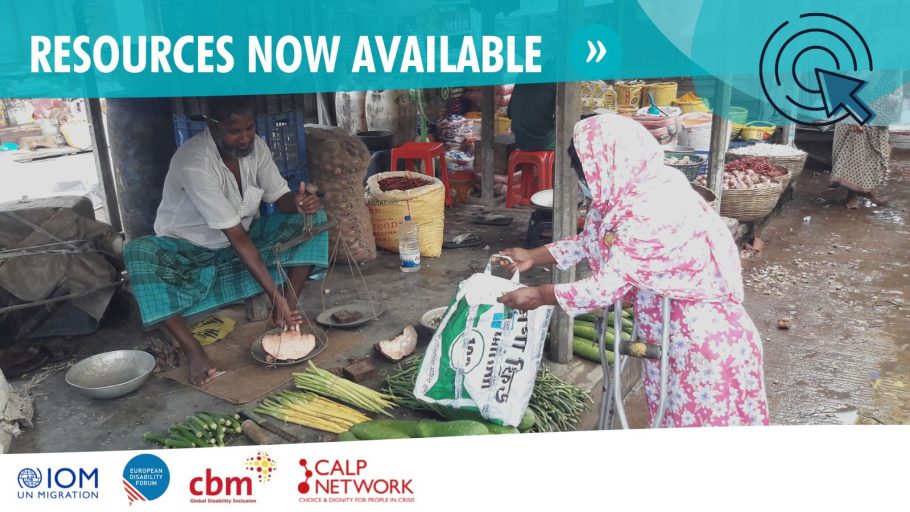
Mainstreaming disability inclusion into humanitarian CVA
Presentation
What is a rights-based approach to disability? How can disability inclusion be mainstreamed to ensure more inclusive and effective CVA humanitarian responses? To answer these key questions, CALP, CBM Global, European Disability Forum and International Organization for Migration (IOM), came together to organize the webinar “Mainstreaming disability inclusion into humanitarian CVA”, with the...
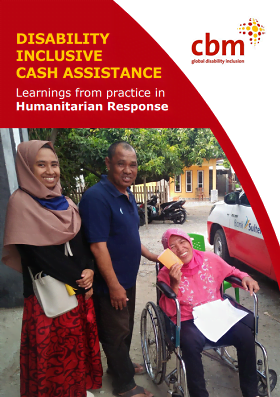
Disability Inclusive Cash Assistance: Learnings from Practice in Humanitarian Response
Guidelines and Tools
This case study collection describes lessons learned from seven inclusive humanitarian cash transfer projects implemented from 2015 – 2020 in Niger, Zimbabwe, Pakistan, Bangladesh, Philippines, and Indonesia, and five ongoing projects from the 2020 Covid-19 pandemic responses. This good practice collection aims to benefit both humanitarian practitioners engaged in Cash Based Interventions...
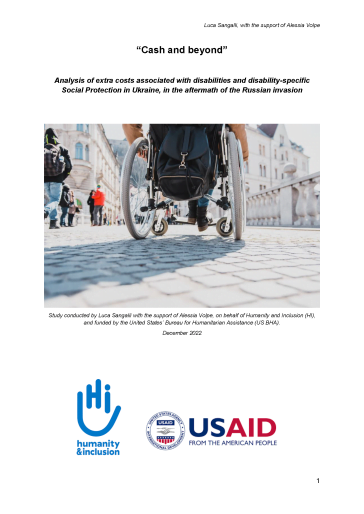
Cash and beyond – Analysis of extra costs associated with disabilities and disability-specific social protection in Ukraine, in the aftermath of the Russian invasion
Report
Following the escalation of the conflict in Ukraine in February 2022 and the consequent humanitarian crisis, the country has experienced active fighting and massive displacement, both within and outside its borders. Persons with disabilities and older persons have been facing particularly harsh effects, especially for those with more severe forms of disabilities, who encountered challenges in...
Thematic lead
Latest

Slides for the Global CWG meeting – Oct 2021
Presentation
The enclosed slides for the 28 October meeting feature presentations from WFP, the Uganda and CAR CWGs and GSMA , as well as key links to key resources discussed.
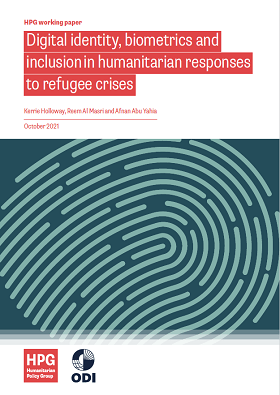
Digital identity, biometrics and inclusion in humanitarian responses to refugee crises
Report
Digital identity and biometrics have long been divisive topics in the humanitarian sector. On the one hand, they have the potential to be more inclusive and reach people in need at scale due to perceived efficiency gains. A legal identity for everyone as part of the Sustainable Development Goals (SDGs)...
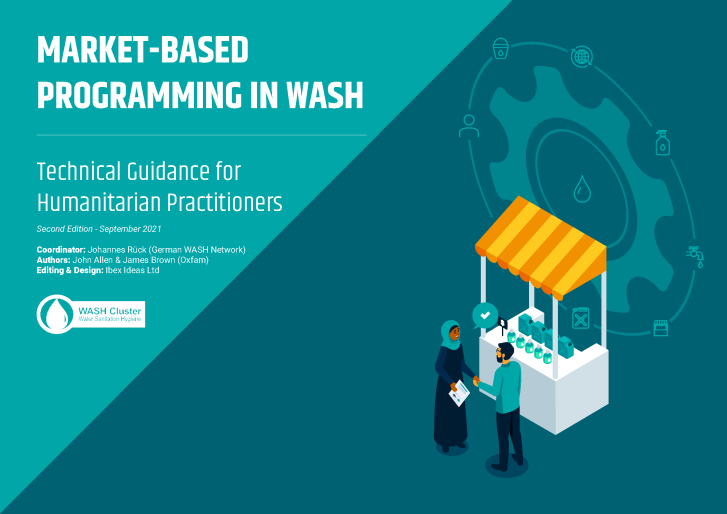
Market-Based Programming in Wash – Technical guidance for humanitarian practitioners
Guidelines and Tools
The purpose of this document is to provide practical guidance on market-based programming (MBP) in humanitarian WASH responses. This guidance is intended for: Humanitarian WASH practitioners Cash and markets practitioners Humanitarian business support teams supporting WASH programmes WASH Cluster/Sector...

Gender-Sensitive Cash and Voucher Assistance: Guidance to ensure the approach in the field
Guidelines and Tools
This guidance builds on CARE’s ambition-via practice, research, evidence on CVA–and aims to support the application of gender sensitive CVA throughout the project cycle and at the response level. It is divided into two sections: – Part A: ‘What has been learned about gender sensitive CVA?,’...

Guidelines on Using Cash and Voucher Assistance for Sexual and Reproductive Health and Rights Programming
Guidelines and Tools
CARE seeks to increase its use of CVA for one of its core areas of programming, Sexual and Reproductive Health and Rights (SRHR). This is in line with the recommendations of the Inter-Agency Working Group on Reproductive Health, which deems CVA a suitable option to ensure ongoing access to affordable and...

Cash and Voucher Assistance and Gender-Based Violence Compendium and Editable Risk Matrix Translations
Guidelines and Tools
This brief serves as a complementary document to the Cash & Voucher Assistance and Gender- Based Violence Compendium: Practical Guidance for Humanitarian Practitioners and is intended to be a reference guide delineating sections, features, and new tools. In addition, it provides the respective links to...

Gender Analysis of Livelihoods Programming and Individual, Household and Community Dynamics in Iraq
Report
Women throughout the world are constrained in their economic activities, and face major challenges trying to pursue better paid and more productive jobs, including in Iraq. Iraq is in a time of change after ISIS and in light of the pandemic. Though economic upheaval brings hardship, it also can open doors...

Disability Inclusive Cash Assistance: Learnings from Practice in Humanitarian Response
Guidelines and Tools
This case study collection describes lessons learned from seven inclusive humanitarian cash transfer projects implemented from 2015 – 2020 in Niger, Zimbabwe, Pakistan, Bangladesh, Philippines, and Indonesia, and five ongoing projects from the 2020 Covid-19 pandemic responses. This good practice...

We Don’t Do a Lot for Them Specifically
Report
Cash based assistance is a large part of government and NGO responses to social protection needs during the COVID-19 crisis. But is this assistance reaching people with diverse SOGIESC (aka LGBTIQ+ people). There are clear needs, borne of systemic discrimination, including loss of informal sector work,...

We Don’t Do a Lot for Them Specifically – Quick Guide
Report

Evaluation of the Cash Plus Project’s Contribution to Reducing Vulnerability amongst Adolescent Girls & Young Women to HIV in Turkana County
Case Study
The Cash Plus programme aimed to influence change in several factors that increase the vulnerability of AGYW to HIV in Turkana County. The project design promoted combination prevention programming. Biomedical, behavioural and structural interventions targeting AGYW were implemented over approximately...
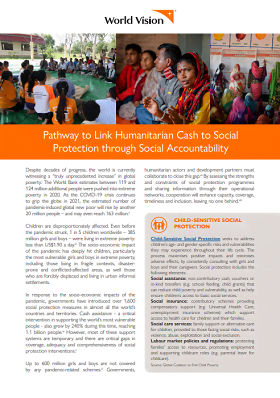
Transfers with Impact – Pathway to Link Humanitarian Cash to Social Protection through Social Accountability
Policy paper
In response to the socio-economic impacts of the pandemic, governments have introduced over 1,600 social protection measures in almost all the world’s countries and territories. Cash assistance – a critical intervention in supporting the world’s most vulnerable people – also grew by 240% during...
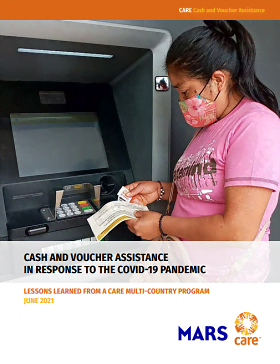
Cash and Voucher Assistance in Response to the COVID-19 Pandemic Lessons Learned from a CARE Multi-Country Program
Report
CARE implemented a multi-country program with the aim of reducing the negative impacts of COVID-19 on vulnerable populations, especially women and girls, using complementary and multimodal approaches, including the provision of cash and voucher assistance (CVA). Given the nature and scale of this program...
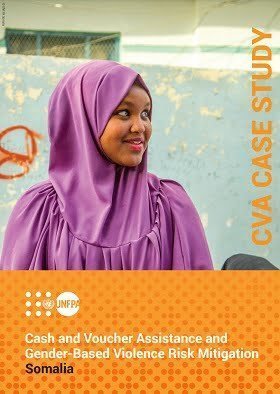
Somalia CVA Case Study: Cash and Voucher Assistance and Gender-Based Violence Risk Mitigation
Report
In order to better understand the potential risks for women and girls that may be created by the provision of humanitarian cash assistance, Cash and Voucher Assistance (CVA) and Gender-Based Violence (GBV) experts from Somalia worked closely together to evaluate existing CVA interventions in Somalia and...

Minding the (financial and digital) gap! – How informal social safety nets leverage digital & cash enablers in COVID-19 pandemic
Presentation
Minding the (financial and digital) gap! – How informal social safety nets leverage digital & cash enablers in COVID-19 pandemic: In every context, strengthening the links between cash transfers, savings groups and digitisation contributes to resilient recovery from COVID-19. Representatives of...

Enablers and Gaps: Gender Equality, Gender-Based Violence Response and Mitigation in Cash and Voucher Assistance at Response levels: analysis on three case studies
Report
The Gender and Cash Sub-Workstream identified three case studies that illustrate how Cash Working Groups, GBV Sub-Clusters, gender focal points (e.g. Gender in Humanitarian Action Working groups at country and regional level) and humanitarian partnerships can enable meaningful and wider engagement on...
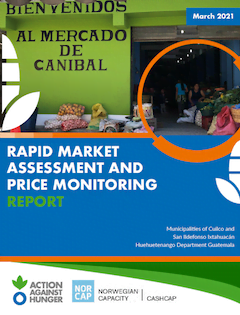
Rapid Market Assessment and Price Monitoring Report – Huehuetenango Department Guatemala
Report
Methodology: This rapid assessment of markets and prices was based on an adapted version of the IFRC’s Rapid Assessment for Markets, elements of the EMMA toolkit’s market system approach and the consortium of NGO’s price monitoring format. The methodology was chosen to give a basic and rapid...

Comparative study of the effects of different cash modalities on gender dynamics and people with disabilities in Aleppo, Syria
Report
In 2020/2021, the Syria Joint Response partners (ZOA, Oxfam, Cordaid, Dorcas and Terre des Hommes) completed a comparative research to showcase the different effects of different modalities on the most deprived and marginalised groups, in particular women and People With Disabilities (PWD) in order to...

Comparative study of the effects of different cash modalities on gender dynamics and people with disabilities in Aleppo, Syria – Executive summary
Report
In 2020/2021, the Syria Joint Response partners (ZOA, Oxfam, Cordaid, Dorcas and Terre des Hommes) completed a comparative research to showcase the different effects of different modalities on the most deprived and marginalised groups, in particular women and People With Disabilities (PWD) in order to...

User journeys of Syrian refugees receiving multi-purpose cash from WFP in Lebanon
Report
Ground Truth Solutions, in collaboration with the Cash Monitoring, Evaluation, Accountability and Learning Organizational Network (CAMEALEON) have produced a report detailing the lived experiences or “user journeys” of Syrian refugees in Lebanon receiving multipurpose cash assistance from the World...



